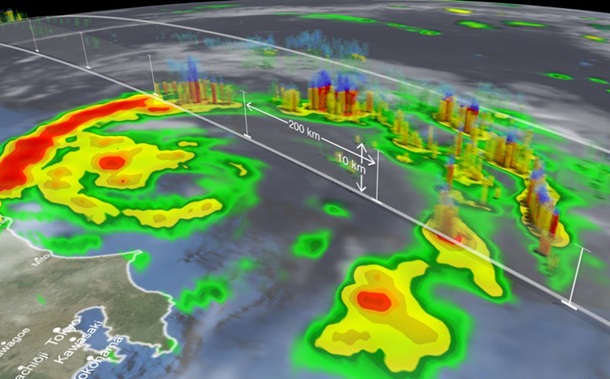Cryptocurrency Forecasting Using Deep Learning Models: A Comparative Analysis
Downloads
Doi:10.28991/HIJ-2024-05-04-013
Full Text:PDF
Downloads
Kaushal, R. (2016). Bitcoin: First Decentralized Payment System. International Journal of Engineering and Computer Science, 5(5), 16514–16517. doi:10.18535/ijecs/v5i5.30.
Oliver, J. (2013). Mastering blockchain distributed ledger technology, and smart contracts explained. "Ž Packt Publishing, Birmingham, United Kingdom.
Doumenis, Y., Izadi, J., Dhamdhere, P., Katsikas, E., & Koufopoulos, D. (2021). A critical analysis of volatility surprise in bitcoin cryptocurrency and other financial assets. Risks, 9(11), 207. doi:10.3390/risks9110207.
Chen, W., Xu, H., Jia, L., & Gao, Y. (2021). Machine learning model for Bitcoin exchange rate prediction using economic and technology determinants. International Journal of Forecasting, 37(1), 28–43. doi:10.1016/j.ijforecast.2020.02.008.
Ibrahim, A., Kashef, R., & Corrigan, L. (2021). Predicting market movement direction for bitcoin: A comparison of time series modeling methods. Computers and Electrical Engineering, 89, 106905. doi:10.1016/j.compeleceng.2020.106905.
Baur, D. G., Dimpfl, T., & Kuck, K. (2018). Bitcoin, gold and the US dollar – A replication and extension. Finance Research Letters, 25, 103–110. doi:10.1016/j.frl.2017.10.012.
Fakhfekh, M., & Jeribi, A. (2020). Volatility dynamics of crypto-currencies' returns: Evidence from asymmetric and long memory GARCH models. Research in International Business and Finance, 51. doi:10.1016/j.ribaf.2019.101075.
Khedr, A. M., Arif, I., Pravija Raj, P. V., El-Bannany, M., Alhashmi, S. M., & Sreedharan, M. (2021). Cryptocurrency price prediction using traditional statistical and machine-learning techniques: A survey. Intelligent Systems in Accounting, Finance and Management, 28(1), 3–34. doi:10.1002/isaf.1488.
Kristjanpoller, W., & Minutolo, M. C. (2018). A hybrid volatility-forecasting framework integrating GARCH, artificial neural network, technical analysis and principal components analysis. Expert Systems with Applications, 109, 1–11. doi:10.1016/j.eswa.2018.05.011.
Hajek, P., Hikkerova, L., & Sahut, J. M. (2023). How well do investor sentiment and ensemble learning predict Bitcoin prices? Research in International Business and Finance, 64, 101836. doi:10.1016/j.ribaf.2022.101836.
Cui, T., Ding, S., Jin, H., & Zhang, Y. (2023). Portfolio constructions in cryptocurrency market: A CVaR-based deep reinforcement learning approach. Economic Modelling, 119. doi:10.1016/j.econmod.2022.106078.
Liu, M., Li, G., Li, J., Zhu, X., & Yao, Y. (2021). Forecasting the price of Bitcoin using deep learning. Finance Research Letters, 40, 101755. doi:10.1016/j.frl.2020.101755.
Ortu, M., Uras, N., Conversano, C., Bartolucci, S., & Destefanis, G. (2022). On technical trading and social media indicators for cryptocurrency price classification through deep learning. Expert Systems with Applications, 198, 116804. doi:10.1016/j.eswa.2022.116804.
Vaswani, A. (2017). Attention is all you need. Advances in Neural Information Processing Systems. 31st Conference on Neural Information Processing Systems (NIPS 2017), Long Beach, California, United States. doi:10.48550/arXiv.1706.03762
Boongasame, L., & Songram, P. (2023). Cryptocurrency price forecasting method using long short-term memory with time-varying parameters. Indonesian Journal of Electrical Engineering and Computer Science, 30(1), 435–443. doi:10.11591/ijeecs.v30.i1.pp435-443.
Fleischer, J. P., von Laszewski, G., Theran, C., & Bautista, Y. J. P. (2022). Time Series Analysis of Cryptocurrency Prices Using Long Short-Term Memory. Algorithms, 15(7), 230. doi:10.3390/a15070230.
Patel, M. M., Tanwar, S., Gupta, R., & Kumar, N. (2020). A Deep Learning-based Cryptocurrency Price Prediction Scheme for Financial Institutions. Journal of Information Security and Applications, 55(102583). doi:10.1016/j.jisa.2020.102583.
Tripathy, N., Hota, S., & Mishra, D. (2023). Performance analysis of bitcoin forecasting using deep learning techniques. Indonesian Journal of Electrical Engineering and Computer Science, 31(3), 1515-1522.
Wu, N., Green, B., Ben, X., & O'Banion, S. (2020). Deep transformer models for time series forecasting: The influenza prevalence case. arXiv preprint arXiv:2001.08317.
McNally, S., Roche, J., & Caton, S. (2018). Predicting the Price of Bitcoin Using Machine Learning. In Proceedings - 26th Euromicro International Conference on Parallel, Distributed, and Network-Based Processing, PDP 2018, 339–343. doi:10.1109/PDP2018.2018.00060.
Wu, C. H., Lu, C. C., Ma, Y. F., & Lu, R. S. (2018). A new forecasting framework for bitcoin price with LSTM. In 2018 IEEE international conference on data mining workshops (ICDMW), 168-175. doi:10.1109/ICDMW.2018.00032.
Li, Y., & Dai, W. (2020). Bitcoin price forecasting method based on CNN"LSTM hybrid neural network model. The Journal of Engineering, 2020(13), 344–347. doi:10.1049/joe.2019.1203.
Ramos-Pérez, E., Alonso-González, P. J., & Núñez-Velázquez, J. J. (2021). Multi-transformer: A new neural network-based architecture for forecasting s&p volatility. Mathematics, 9(15), 1794. doi:10.3390/math9151794.
Kanaparthi, V. (2024). Robustness Evaluation of LSTM-based Deep Learning Models for Bitcoin Price Prediction in the Presence of Random Disturbances. International Journal of Innovative Science and Modern Engineering, 12(2), 14–23. doi:10.35940/ijisme.b1313.12020224.
Khaniki, M. A. L., & Manthouri, M. (2024). Enhancing Price Prediction in Cryptocurrency Using Transformer Neural Network and Technical Indicators. arXiv preprint, arXiv:2403.03606. doi:10.48550/arXiv.2403.03606.
Jin, C., & Li, Y. (2023). Cryptocurrency Price Prediction Using Frequency Decomposition and Deep Learning. Fractal and Fractional, 7(10), 708. doi:10.3390/fractalfract7100708.
Chen, J. (2023). Analysis of Bitcoin Price Prediction Using Machine Learning. Journal of Risk and Financial Management, 16(1), 51. doi:10.3390/jrfm16010051.
Ladhari, A., & Boubaker, H. (2024). Deep Learning Models for Bitcoin Prediction Using Hybrid Approaches with Gradient-Specific Optimization. Forecasting, 6(2), 279–295. doi:10.3390/forecast6020016.
Frohmann, M., Karner, M., Khudoyan, S., Wagner, R., & Schedl, M. (2023). Predicting the Price of Bitcoin Using Sentiment-Enriched Time Series Forecasting. Big Data and Cognitive Computing, 7(3), 137. doi:10.3390/bdcc7030137.
Hastie, T., Tibshirani, R., & Friedman, J. (2009). The Elements of Statistical Learning: Data Mining, Inference, and Prediction. Springer Science & Business Media, New York, United States. doi:10.1007/978-0-387-21606-5.
Schmidhuber, J. (2015). Deep Learning in Neural Networks: An Overview. Neural Networks, 61, 85–117. doi:10.1016/j.neunet.2014.09.003.
Hochreiter, S., & Schmidhuber, J. (1997). Long short-term memory. Neural Computation, 9(8), 1735–1780.
Drucker, H., Burges, C. J., Kaufman, L., Smola, A., & Vapnik, V. (1996). Support vector regression machines. Advances in Neural Information Processing Systems, 9.
Chen, T., & Guestrin, C. (2016). XGBoost: A scalable tree boosting system. Proceedings of the ACM SIGKDD International Conference on Knowledge Discovery and Data Mining, 13-17-August-2016, 785–794. doi:10.1145/2939672.2939785.
O'Brien, R. M. (2007). A caution regarding rules of thumb for variance inflation factors. Quality and Quantity, 41(5), 673–690. doi:10.1007/s11135-006-9018-6.
Staniswalis, J. G., Severini, T. A., & Moschopoulos, P. G. (1993). On a data based power transformation for reducing skewness. Journal of Statistical Computation and Simulation, 46(1–2), 91–100. doi:10.1080/00949659308811495.
Han, X., Huang, Y., Pan, Z., Li, W., Hu, Y., & Lin, G. (2023). Multi-Task Time Series Forecasting Based on Graph Neural Networks. Entropy, 25(8), 1136. doi:10.3390/e25081136.
- This work (including HTML and PDF Files) is licensed under a Creative Commons Attribution 4.0 International License.





















